Oryba kadeni
|
|
Updated as per The Known Sphingidae of Costa Rica, November 2007
Updated as per personal communication with Jose Monzon (Guatemala); May 2009
Updated as per
AN ANNOTATED CHECKLIST OF THE SPHINGIDAE OF BOLIVIA, December 2009
Updated as per personal communication with Andres Urbas (near Kaw Mountains, French Guiana, April 8, 2011); April 19, 2011
Updated as per personal communication with Gregory Nielsen (Colombia: Meta, Km 13 via Acacias, Villavicencio; 500m, December 29, 2015)
January 6, 2016; (December 2, 2020); December 3, 2020
Updated as per personal communication with Marcial Garcia (brown female, Venezuela: Monaga: Caripe, May 25, 2018)
May 25, 2018
Updated as per Hawk-moths (Lepidoptera: Sphingidae) of Trinidad, West Indies: an illustrated and annotated list; Matthew J.W. Cock; April 11, 2022
Sphingidae (Lepidoptera: Bombycoidea) assemblage in the State Ecological Station of Wenceslau Guimaraes, Bahia, Brazil, Marlon Paluch, 2021, July 15, 2024
Updated as per persnal communication with Albert Thurman, August 5, 2025
|
Oryba kadeni
oh-REE-buhmm
KAY-den-eye or ee
(Schaufuss, 1870) Pachylia
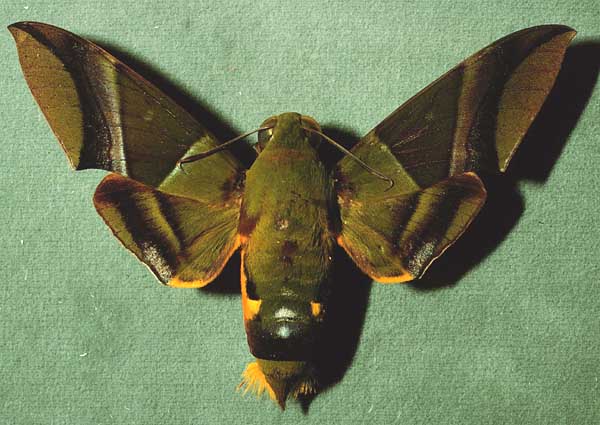
Oryba kadeni male, Costa Rica, courtesy of Dan Janzen.

Oryba kadeni male, Villavicencio, Meta, Colombia,
500m, December 2, 2020, courtesy of Gregory Nielsen.
This site has been created by Bill Oehlke.
Comments, suggestions and/or additional information are welcomed by Bill.
TAXONOMY:
Family: Sphingidae, Latreille, 1802
Subfamily: Macroglossinae, Harris, 1839
Tribe: Dilophonotini, Burmeister, 1878
Genus: Oryba Walker, 1856 ...........
Species: kadeni Schaufuss, 1870
|
DISTRIBUTION:
Oryba kadeni, (wingspan: 102-116 mm, females larger than males), flies in "South America".
It has been reported in Guatemala (JM);
Costa Rica;
Panama; to
Colombia: Meta: Villavicencio (GN);
Brazil: Para; Bahia: Wenceslau Guimaraes: February;
Bolivia: La Paz, Santa Cruz;
Ecuador;
Peru: Ucayali (VI); Huanuco: Tingo Maria;
Venezuela: Amazonas, Anzoategui,
Aragua, Bolivar, Carabobo, Miranda, Monaga: Caripe (MG); Zulia;
Trinidad; and
French Guiana: Kaw.
It may fly as far north as Belize: Cayo, Toledo (JM). I suspect it also flies in Guyana, Suriname and (Colombia, confirmed by
Gregory Nielsen).
This species is taken at elevations from sea level to 1100m in Venezuela.
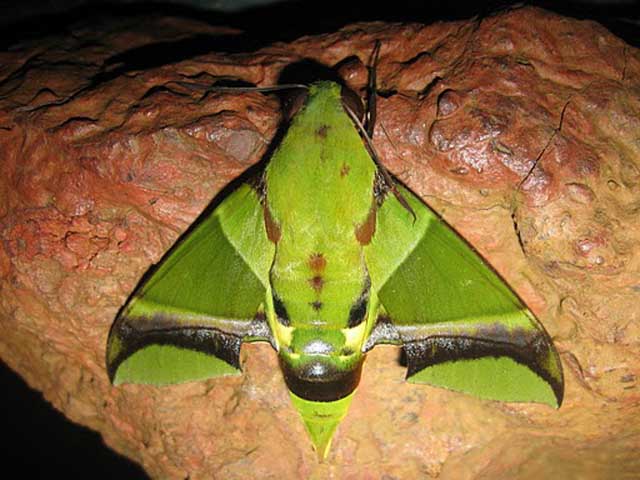
Oryba kadeni, near Kaw Mountains, French Guiana,
April 8, 2011, courtesy of Andres Urbas.

Oryba kadeni male, Villavicencio, Meta, Colombia,
500m, December 2, 2020, courtesy of Gregory Nielsen.
In Greek mythology "Oryba" is one of the twelve cities which Alexander has taken from the Arabians.
The species name is in honour of Kaden who may have had a specimen in his collection.
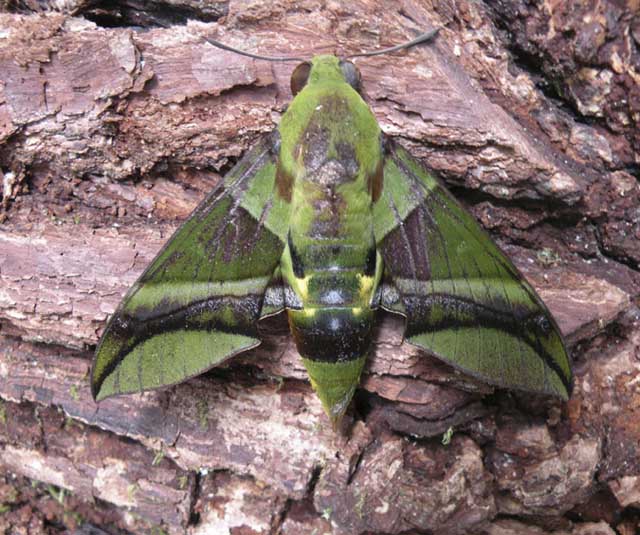
Oryba kadeni, Rio Sapani, Ucayali, Peru,
October 29 2008, 350m, courtesy of Vladimir Izersky.

Oryba kadeni, Tingo Maria, Huanuco, Peru,
courtesy of Hilda Ramirez Aranda.
FLIGHT TIMES:
There are probably several flights throughout the year. Andres Urbas reports an April 8, 2011, flight in Kaw Mountains, French Guiana.
Gregory Nielsen reports an early and a late December flight in Colombia. Marcial Garcia reports a May, 25, 2018, flight in Caripe, Monagas, Venezuela.
Albert Thurman reports an August flight in Fortuna, Chiriqui, Panama. Tim Borski reports a July flight in Cerro Azul, Panama, Panama.

Oryba kadeni, Villavicencia, Meta, Colombia,
December 29, 2015, 500m, courtesy of Gregory Nielsen

Oryba kadeni, Villavicencia, Meta, Colombia,
December 29, 2015, 500m, courtesy of Gregory Nielsen
ECLOSION:
Larvae probably pupate in thin walled cocoons under leaf litter.
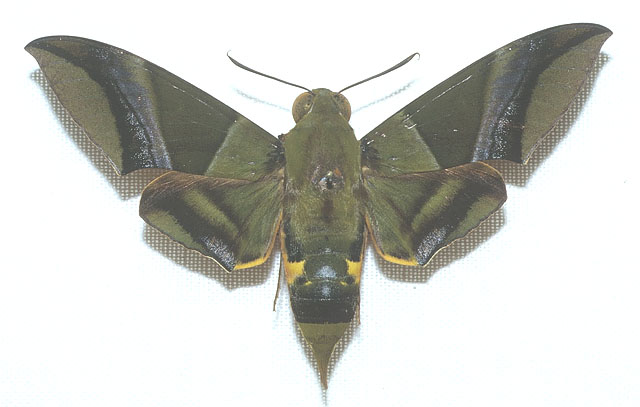
Oryba kadeni, courtesy of Hubert Mayer
copyright.
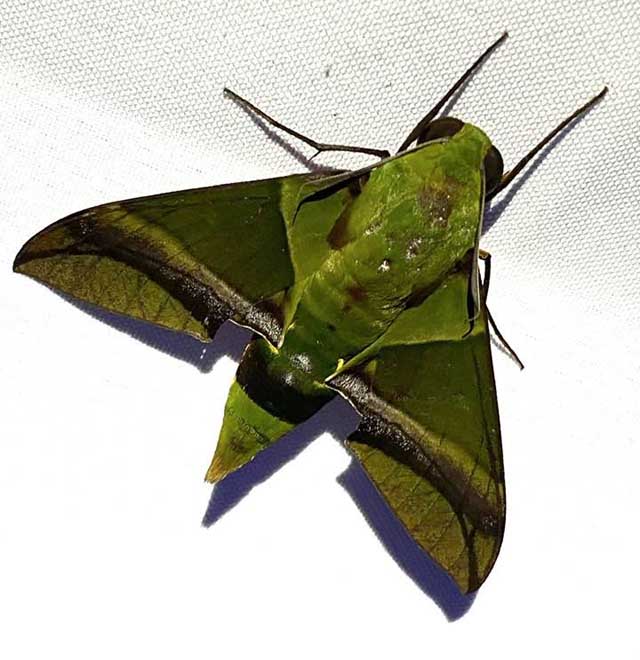
Oryba kadeni, Cerro Azul, Panama, Panama,
July, 2025, courtesy of Tim Borski.
SCENTING AND MATING:
Females call in the males with a pheromone released from a gland at the tip of the abdomen.
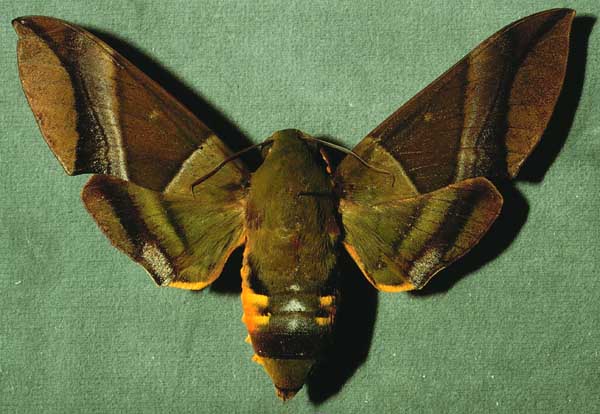
Oryba kadeni female, Costa Rica, courtesy of Dan Janzen.
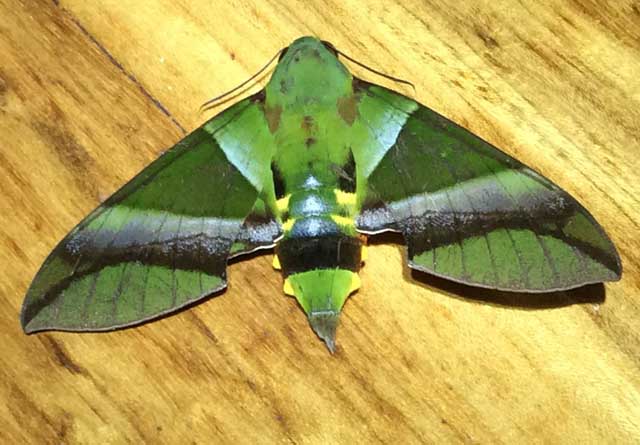
Oryba kadeni Fortuna, Chiriqui, Panama, August 2019, courtesy of Albert Thurman.

Oryba kadeni female, Caripe, Monagas, Venezuela,
May 25, 2018, courtesy of Marcial Garcia, id by Bill Oehlke.
EGGS, LARVAE, PUPAE:Larvae are reported on Isertia laevis. Mature larvae probably descend
host to pupate amongst leaf litter. |
 |
Use your browser "Back" button to return to the previous page.
Return to U. S. A. Table
Return to Sphingidae Index
Return to Dilophonotini Tribe
Use your browser "Back" button to return to the previous page.
This page is brought to you by Bill Oehlke and the WLSS.
Please send sightings/images to Bill. I will do my best to respond to requests for identification help.













